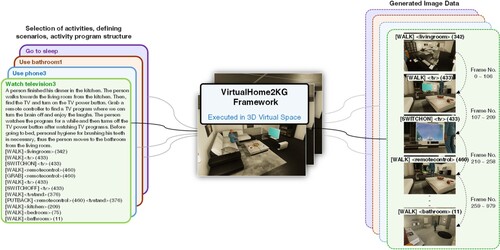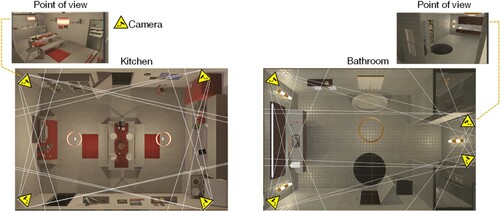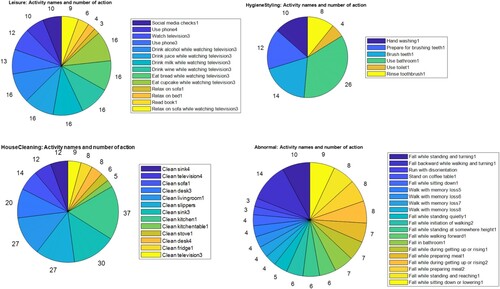Figures & data
Figure 1. Example context related to human household activities, behaviour, or kitchen usage patterns.
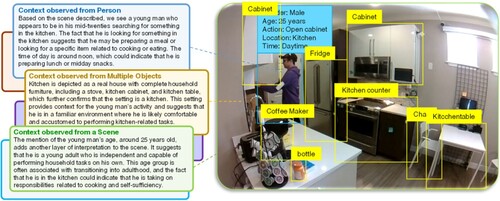
Table 1. Consistent features observed among the real-world activity datasets.
Table 2. Consistent features observed among the synthetic activity datasets.
Table 3. Applied synthetic activity datasets in AI research tasks.
Figure 3. Part of the designed class diagram of ontology [Citation8].
![Figure 3. Part of the designed class diagram of ontology [Citation8].](/cms/asset/c64a2d72-0c4b-441e-aed3-281c0edea465/tmsi_a_2318848_f0003_oc.jpg)
Table 4. Selected categories of daily living activities and their general description.
Table 5. Selected abnormal activities occurred in home environments.
Figure 5. Alignment of objects and actions with activity categories – Abnormal, EatingDrinking, and HouseCleaning.
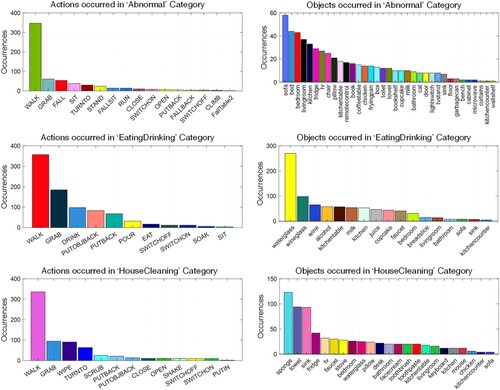
Figure 7. Some simulated daily activities in the virtual homes, exploring various scenarios and interactions.
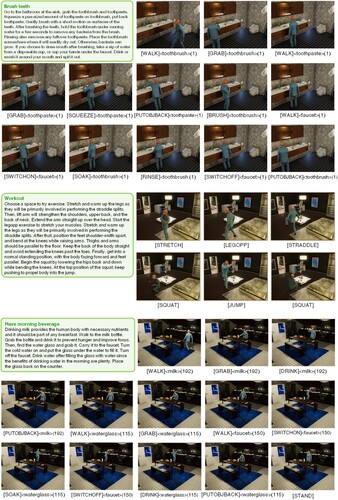
Figure 8. Some simulated abnormal activities in the virtual homes, exploring unexpected risky situations.
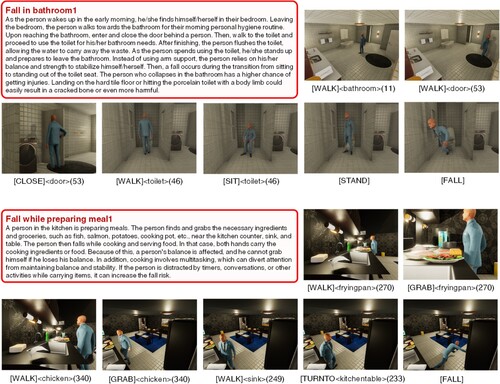
Figure 9. Illustration of feature extraction: construction of virtual ground point (VGP) and posture deformities are estimated by calculating angles involving three points in the upper body of skeleton image.
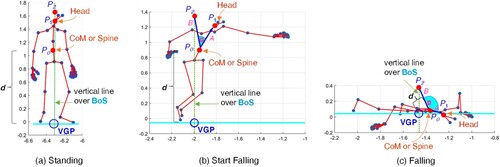
Table 6. Performance evaluation on some simulated abnormal activity data.

